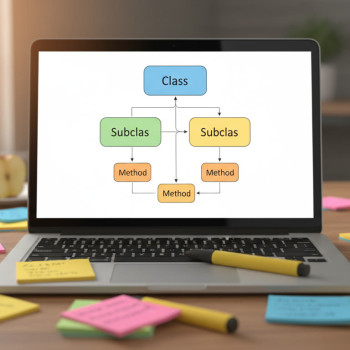Why Rubric Verbs Matter: The Secret Language of AP Exams
If you’ve ever stared at an AP free-response prompt and felt like it was written in another language, you’re not alone. Rubric verbs — the single words that direct your task (analyze, compare, justify, describe) — are tiny steering wheels that tell you exactly how to shape your response. Master those verbs, and you transform guesswork into strategy.

How To Use This Guide
This piece is a translator’s guide. You’ll find:
- Plain-language translations of the most common AP rubric verbs.
- Quick-response blueprints and sentence starters to get you writing fast.
- Scoring-smart tips so you hit rubric expectations directly.
- A handy table you can skim before practice exams.
- Study and time-management strategies, and how personalized tutoring (like Sparkl’s 1-on-1 guidance) can accelerate your progress.
What Teachers and Exams Mean When They Use These Verbs
Across AP subjects — whether it’s AP English Language, AP U.S. History, AP Biology, or AP Calculus — rubric verbs are surprisingly consistent in the thinking they expect. Below are the most frequent verbs you’ll see, translated into student-friendly actions.
1. Describe
Translate to: Provide clear, specific details. No analysis required — just paint the scene or list the facts. This is about accuracy and completeness.
Sentence starters: “The passage/event/experiment shows…”, “From the data we see…”, “Key features include…”
2. Explain
Translate to: Give cause-and-effect or clarify how/why something works. Link facts to reasons — show the chain of logic.
Sentence starters: “This occurs because…”, “The reason for this is…”, “This leads to… which results in…”
3. Analyze
Translate to: Break into parts, examine relationships, and interpret meaning. Analysis goes deeper than explanation — compare, probe assumptions, and show implications.
Sentence starters: “This suggests… because…”, “When we examine X and Y, we see…”, “A significant relationship is…”
4. Compare (and Contrast)
Translate to: Identify similarities and differences. Don’t just list; organize — use direct comparison to highlight meaningful connections.
Sentence starters: “Both X and Y…, however X differs in that…”, “While X shows…, Y demonstrates…”
5. Evaluate / Assess / Judge
Translate to: Make a reasoned judgment and defend it with evidence. Weigh strengths and weaknesses, consider trade-offs, and reach a supported conclusion.
Sentence starters: “Overall, the evidence supports…, because…”, “Although X has merit, Y is stronger due to…”
6. Justify
Translate to: Give clear support for a claim using evidence and logic. Slightly narrower than evaluate: you’re proving a chosen point is reasonable.
Sentence starters: “This claim is justified by…”, “Supporting evidence includes…”
7. Compare Data / Interpret Data
Translate to: Read charts, tables, or graphs and extract meaningful patterns. Don’t describe every number — synthesize trends and relate them to the prompt’s question.
Sentence starters: “The trend in the data indicates…”, “A notable pattern is… which implies…”
8. Synthesize
Translate to: Combine information from multiple sources or parts into a coherent whole. Often used in AP English Language and History: show how diverse evidence supports a unified argument.
Sentence starters: “Taken together, these sources suggest…”, “When combined, the evidence indicates…”
Rubric-Verbs at a Glance: Quick Actions and Response Tips
| Rubric Verb | Translate To | What Graders Look For | Quick Student Move |
|---|---|---|---|
| Describe | List specifics | Accuracy, completeness | Give concrete examples; avoid opinion |
| Explain | Cause and effect | Clear logical links | Use “because” chains |
| Analyze | Break down and interpret | Depth and connections | Prioritize strongest relationships |
| Compare | Show likeness and difference | Balanced comparison | Use parallel structure |
| Evaluate | Weigh and conclude | Reasoned judgment with evidence | State claim, then support |
| Justify | Prove with evidence | Strength of evidence | Pick best evidence and explain why |
| Interpret | Explain meaning | Insightful connections | Relate data to broader concept |
| Synthesize | Combine sources | Cohesive argument | Weave evidence into a thesis |
Example Walk-Throughs: How to Turn a Verb Into a Plan
Let’s make this practical. Below are three short exercises, each showing how to translate a common prompt verb into a small, step-by-step plan.
Prompt Type A — AP English Language: “Analyze how the author uses rhetoric to achieve purpose.”
Plan:
- Step 1 — Identify the author’s purpose in one sentence.
- Step 2 — Pick 3 rhetorical strategies (diction, analogy, tone) that clearly support that purpose.
- Step 3 — For each strategy, quote briefly, explain the effect, and link back to purpose.
- Step 4 — Conclude by summarizing how the strategies combine to accomplish the aim.
Prompt Type B — AP U.S. History: “Compare the economic policies of A and B and evaluate which was more effective.”
Plan:
- Step 1 — Define criteria for “effective” (e.g., growth, stability, equality).
- Step 2 — Briefly describe A and B’s policies (one paragraph each).
- Step 3 — Compare along your criteria: cite data or outcomes.
- Step 4 — Reach a supported judgment and explain trade-offs.
Prompt Type C — AP Biology: “Explain how a specific mutation might affect protein function.”
Plan:
- Step 1 — Identify the mutation type (missense, nonsense, frameshift).
- Step 2 — Describe the normal protein function.
- Step 3 — Explain how the mutation alters structure, then function.
- Step 4 — If asked, predict organism-level effects and compensations.
Concrete Rubric-Smart Writing Moves
When time is tight, follow this mini checklist to ensure your response matches the verb:
- If the verb is Describe → Use specific details, names, dates, numbers.
- If the verb is Explain → Link cause and effect explicitly with “because,” “therefore,” “as a result.”
- If the verb is Analyze → Don’t stop at description; show relationships and implications.
- If the verb is Compare → Organize by point or by item; keep parallels tight.
- If the verb is Evaluate/Justify → Take a stance and back it with prioritized evidence.
Time Management and Exam-Day Strategy
Rubric verbs help you prioritize. If a prompt asks you to “analyze” rather than “describe,” devote more time to thinking through relationships and drafting a strong thesis. Here’s a rough timing template you can adapt for most AP free-response sections:
- First 2–4 minutes: Read prompt and underline the rubric verb(s). Decide your thesis/claim.
- Next 6–10 minutes: Outline your response — list the evidence and the order in which you’ll use it.
- Remaining time: Write methodically. Reserve 1–2 minutes at the end to proofread key facts and transitions.
Tip: Use the first 30–60 seconds to translate the verb into a concrete action (e.g., “Analyze = break into causes and effects; pick 3 causes”). That tiny investment saves time later.
Rubric Verb Sentence Starter Bank
Keep this mental bank handy; they’re scaffolded so you can adapt them quickly under pressure.
- Describe: “Specifically, X demonstrates…”
- Explain: “This happens because…”
- Analyze: “A close analysis reveals that…”
- Compare: “Whereas X…, Y…”
- Evaluate: “Given the evidence, X is more effective because…”
- Justify: “This claim is justified by the fact that…”
- Synthesize: “Taken together, the sources indicate…”
How to Practice Rubric Verbs Effectively
Practice deliberately, not just frequently. Here’s a weekly drilling plan you can follow in the month before your exam:
- Week 1 — Focus on Describe and Explain: 10 short prompts, 15-minute time limit each. Check for specificity and clarity.
- Week 2 — Focus on Analyze and Compare: 8 prompts, outline first, then write. Aim for depth over breadth.
- Week 3 — Focus on Evaluate and Justify: Practice building an argument with prioritized evidence.
- Week 4 — Mixed timed sections: simulate exam conditions and review rubrics to self-grade.
Working with a tutor can make this practice far more efficient. Sparkl’s personalized tutoring offers 1-on-1 guidance and tailored study plans so you’re not guessing which verbs to prioritize — you train for the exact thinking the rubric rewards.
Sample Self-Scoring Rubric
Use this quick rubric to grade your own practice responses. Be honest — it’s how you get better.
| Criterion | Excellent (3) | Okay (2) | Needs Work (1) |
|---|---|---|---|
| Answer Addresses Verb | Directly executes required action (analysis, evaluation). | Partially executes; some misinterpreted tasks. | Mostly descriptive when analysis/evaluation were required. |
| Use of Evidence | Specific, relevant, well-integrated evidence. | Relevant evidence but not well-linked to claims. | Vague, missing, or irrelevant evidence. |
| Clarity & Organization | Logical structure; thesis and transitions present. | Some structure but weak transitions or thesis. | Disorganized; hard to follow. |
| Mechanics and Precision | Accurate terms and facts; minimal errors. | Minor errors that don’t obscure meaning. | Frequent errors that confuse meaning. |
Parents: How You Can Help Without Doing the Work
Support matters, and it can be practical without taking over. Here are small, high-impact ways parents can help:
- Ask them to explain one prompt verb and their plan for 60 seconds—listening helps students clarify thinking.
- Provide a quiet, consistent study block and celebrate small wins (practice essays completed, timed sections reviewed).
- Consider targeted tutoring if scores plateau. Personalized tutoring (like Sparkl’s) can diagnose weak verb-translation skills and craft a tailored plan.
Common Pitfalls and How to Avoid Them
Students often miss points not because they lack knowledge but because they misread the verb. Watch for these traps:
- Misreading “analyze” as “describe.” Always ask: am I explaining relationships or just listing facts?
- Wasting time on irrelevant background. Use only what directly answers the verb.
- Failing to state a clear claim when asked to evaluate or justify. Make your position explicit early.
Final Checklist Before You Submit Any Free-Response
- Did I underline or note the rubric verb and translate it into a one-line plan?
- Is my thesis or main claim clear within the first 1–2 sentences (if required)?
- Did I use specific evidence linked to each major point?
- Have I explicitly connected each paragraph back to the rubric verb?
- Do I have 1–2 minutes left to fix any obvious errors?
How Tutoring Accelerates Rubric Mastery
Rubric verbs reward the right kind of thinking, and good tutoring accelerates that thinking. A skilled tutor can:
- Diagnose whether a student is misunderstanding specific verbs (e.g., using description where analysis is required).
- Create targeted practice prompts that isolate and train discrete skills.
- Offer real-time feedback and model how graders interpret rubric language.
- Layer in adaptive tools and AI-driven insights so practice focuses on the weakest links — saving weeks of wasted study. Sparkl’s personalized approach is engineered to do exactly this: tailored study plans, expert tutors, and AI-driven feedback that point you to what truly matters.
Parting Thoughts: From Rubric Reader to Rubric Master
Rubric verbs are not obstacles — they’re your map. They tell you exactly what intellectual move the grader wants to see. If you practice translating verbs into short plans, scaffold evidence to those plans, and refine your delivery, you’ll go from guessing at prompts to answering them with clarity and confidence.
Take one verb a day this week. Translate, outline, write, and self-score. Over time, the translation becomes automatic, and the exam becomes a place to show skills, not a hurdle to survive. If you want to speed that process, consider a few sessions of personalized tutoring to identify quick wins and craft a study path that fits your life.

Quick Reference: Pocket Cheat-Sheet
Print this or save it to your phone and glance at it before any practice test.
- Describe = Facts. No analysis.
- Explain = Cause and effect. Link with because/therefore.
- Analyze = Break down + interpret relationships.
- Compare = Point-for-point similarities/differences.
- Evaluate/Justify = Claim + prioritized evidence.
- Synthesize = Combine sources into a unified argument.
A Final Note to Students
Tests measure thinking under pressure. The easier you make the thinking, the better you perform. Translate rubric verbs into small, repeatable moves, practice with intention, get feedback, and you’ll be amazed at how quickly your scores improve. You don’t need to memorize long lists — you need a reliable translator in your head. Train that translator, and you’ll write responses that graders can’t help but reward.
Good luck — and remember: small changes in how you read a prompt lead to big score improvements. If you want help building a study plan tailored to your strengths, Sparkl’s personalized tutoring offers a friendly, expert way forward.
























No Comments
Leave a comment Cancel